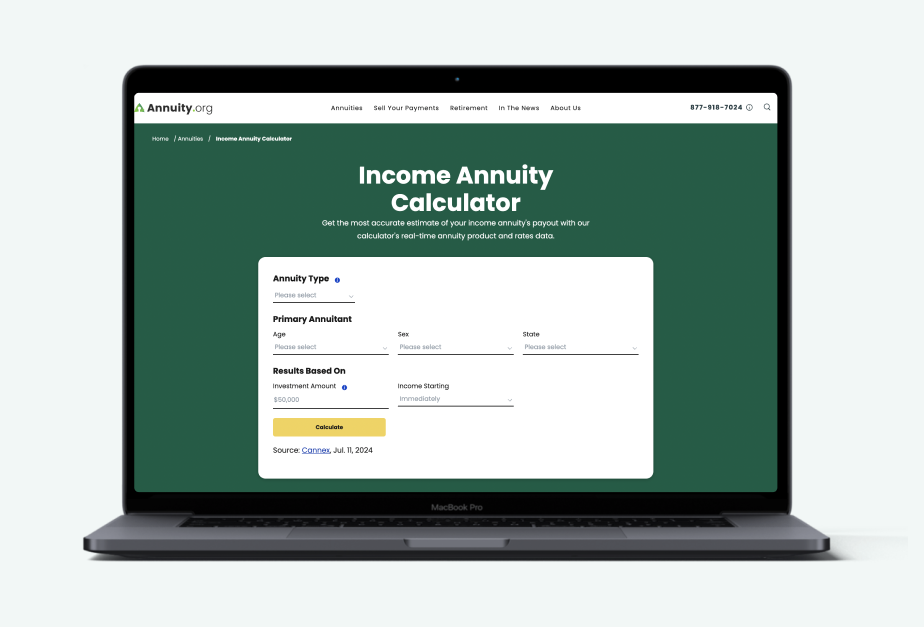The point-to-point method is one of the most common ways to calculate performance for fixed indexed annuities. This contract design may have a higher participation rate and perform better in bull markets, but it comes with the risk of losing gains in the final weeks of the contract. Let’s explore some key facts about this method.
Key Facts About Point to Point Indexing Method
- The point-to-point method measures index performance at the beginning and end of a fixed indexed annuity contract.
- Contracts with the point-to-point design perform best in average markets or extended bull markets.
- Point-to-point contracts place more risk on the annuity owner but may have more generous crediting features, like a higher participation rate.
Understanding the point-to-point method is essential for evaluating its potential benefits and drawbacks. Next, we’ll break down exactly how this method works in more detail.
What Is the Point-to-Point Method?
The point-to-point method is one of the most common indexing methods for annuities. When the growth of an annuity is tied to an equity market index, annuity providers can use the point-to-point method to measure the index’s performance.
Point-to-point is the most straightforward method of calculating a fixed index annuity’s performance. All an annuity provider has to do is find the difference between the index’s value on the first day of the annuity’s term and the value on the last day of the term. Any fluctuations that occur throughout the annuity’s term are disregarded.
If the index shows an increase in value at the end of the period, a percentage of that growth is credited to the annuity contract after provisions such as a participation rate or rate cap. But if the index’s value is lower at the end of the period, the indexed annuity will not lose any value.
Instead, the annuity provider will credit a minimum guaranteed return to the contract. The minimum rate of a fixed index annuity varies by provider, but a typical guarantee is 3% interest on 90% of the premium value.
A variation of point-to-point is the high-water mark method. Both contracts credit interest at the end of the annuity’s term. However, the high-water mark compares the starting index value with its highest value on an anniversary date of the annuity, rather than just taking the value on the contract’s last day.
Annual Point-to-Point Averaging
The annual point-to-point method calculates interest based on the percentage change in an index (e.g., S&P 500) from the beginning to the end of a contract year. It applies a cap rate, which limits the maximum credited interest, and zero-floor protection to ensure that no losses are applied if the index declines.
Biennial Point-to-Point Averaging
The biennial point-to-point method calculates interest based on the difference between the beginning and end value of the index over a two-year period. Negative changes do not reduce the annuity’s value.
Monthly Point-to-Point Averaging
The monthly point-to-point method calculates interest based on the average value of the index over 12 consecutive month-end periods. It works by summing the month-end values and dividing by 12.
So, if the index started the year at 1,000 and the average monthly value was 1,100, the monthly point-to-point average would be 10% (1,100/1,000 – 1 = .10).
Many people are uncomfortable with the point-to-point indexing method, because performance depends on a single reading of the referenced index. The monthly point-to-point indexing method is a compelling alternative. With this approach, the referenced index is measured each month end, and all of the months’ performance gains (adjusted for any caps or participation rates) are added together to determine the total credit percentage for the year.
How soon are you retiring?
What is your goal for purchasing an annuity?
Select all that apply
Example of the Point-to-Point Method
This chart illustrates how annuity providers use the point-to-point method to calculate interest on fixed index annuities. The table shows a few of the most common indexes that annuities may be tied to. Keep in mind that this hypothetical assumes a 100% participation rate and no rate cap on all the annuities.
| Index | Index Value on Start Date | Index Value on End Date | Change in Index | Interest Credited to Annuity |
| S&P 500 | 3,000.00 | 3,600.00 | 20% | 20% |
| Russell 2000 | 2,000.00 | 2,080.00 | 4% | 4% |
| Nasdaq 100 | 10,000.00 | 9,000.00 | -10% | 0% |
With the point-to-point method, only the beginning and ending index values factor into the calculation. Any ups and downs the index might have experienced over the annuity’s term are disregarded.
Because of this, contracts with a point-to-point design perform best in a bull market, where stock and index values are generally rising. If the index shows a decline in the final months or weeks of the contract, the gains of the previous years can be diminished or wiped out, and the contract may only receive the minimum guaranteed return.

Worried About Your Retirement Savings?
Pros and Cons of the Point-to-Point Method
The point-to-point contract design comes with benefits and drawbacks just like any other type of annuity.
Given the overall complexity of fixed index annuity contracts, a significant advantage of the point-to-point design is its straightforwardness. “This is a simple design where you only need to look at two index points to calculate the index return,” Elle Switzer, director of Annuity Product Management at TruStage, told Annuity.org. “Then the cap rate, trigger rate or participation rate determine your return.”
Point-to-point indexed annuities are also the least expensive design for insurers to hedge against. The insurer may pass on this lower hedging cost to the annuity owner through more generous crediting provisions, like a higher participation rate.
However, the less risk a fixed index annuity presents to its insurer, the more risk it gives to the annuity owner. In the point-to-point design, the owner bears the risk that a significant drop in the final weeks or months of the contract can wipe out all the previous years’ gains.
The other major disadvantage of a point-to-point contract is its limited liquidity. If you withdraw funds from the annuity before the end of its term, those withdrawals won’t receive any gains because interest is only credited on the last day of the term.
Point-to-point is just one of many methods that insurers use to calculate fixed index annuity returns, and each method has its advantages and disadvantages. If you’re thinking about purchasing an annuity, consider working with a financial advisor who can walk you through the options to find the best one for you.
Editors Bianca Dagostino and Sierra Campbell contributed to this article.





